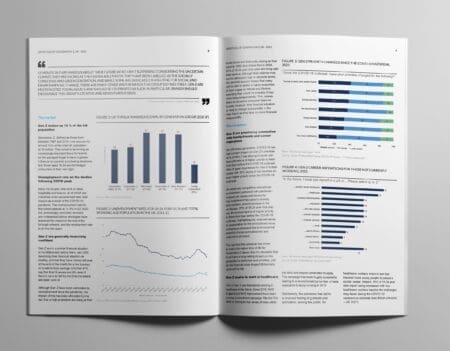For my niece’s birthday this year, she requested Spiderman paraphernalia. With shopping list in hand, I headed to the toy store, ever mindful of achieving Aunt of the Year status. Perusing the aisles, it occurred to me that not so many years ago I might have had to go to the ‘boy’ section of the store to find superhero products. Nowadays, toy stores and other retailers are starting to abandon the push to sell products to specific genders.
Industry leaders such as Amazon recently removed the ‘boy’ and ‘girl’ filters from their toy department’s search page. Now, you’ll find dolls in the “Dolls” section and action figures in the “Action Figures” section, instead of each being housed within sections labeled by those toys’ presumptive target genders. Amazon’s move follows in the footsteps of Toys ‘R Us in the UK, which in 2013 partnered with a parent group in a pledge to phase out gender-specific marketing within their stores.
The imminent obsoleteness of pink and blue toy aisles is reflective of a broader societal shift toward gender equality and blurred gender lines. Most recently:
- With the women’s World Cup playing out this month, Nike is offering US women’s soccer team jerseys in men’s sizes for the first time ever.
- Headquartered in New York, investment banking firm Goldman Sachs has doubled the paid paternity leave for non-primary caregivers from two weeks to four.
As Mintel predicted in the 2015 US Consumer Trend Gender Agenda, the conversation around gender is louder this year than it ever has been in the past, with people questioning traditional ideas of gender roles, rejecting the restraints of stereotypes and embracing the freedom to be themselves and do what they want.
As this overall conversation continues to grow louder, so too do the voices calling attention to how gender stereotyping can affect children. The Mintel Trend Let Kids Be Kids examines how parents who want to raise their kids as individuals are taking a more open-minded approach to child-rearing and are moving away from traditional gender stereotypes. In other words, they don’t want to see their children be forced into labeled boxes – ‘boy’ and ‘girl’ – and they don’t want their children’s lives to be defined by all that comes with those labels.
Tiffe Fermaint, the co-founder of US-based Baby Teith – a new company that specializes in gender-neutral, eco-friendly baby and kids’ clothing – summarized the opportunity this trend presents for brands in a recent statement:
“We genuinely believe that in this day and age, gender stereotypes are outdated. We want our daughter to form her own opinions on the subject and feel that she can dress any way she wishes. Instilling this notion before she forms opinions like ‘Pink is just for girls’ and ‘I have to wear pink because I am a girl’ can be an important step. We are extremely happy to see more clothing in the market that is gender-neutral. The market is changing and we hope that bigger brands take notice. This is a huge step for gender equality.”
Other brands have taken similar stances in regard to children’s gender labeling:
- The UK’s children’s book publisher Ladybird announced that it will no longer brand books as ‘for girls’ or ‘for boys’ in a bid to reduce gender stereotypes. The company signed up to the Let Books be Books campaign which attempts to remove gendered labeling from books.
- Yoga Joes are US-created army figurines that are doing a range of yoga poses. The maker of Yoga Joes hopes to help encourage kids, men and military veterans to give yoga a go. The figurines reflect consumers becoming more open-minded about what constitutes appropriate behavior for men and women.
- Clothing brand Lands’ End bowed to public pressure and launched science-themed shirts for girls as well as boys in the US.
- UK father Sam Farmer has created a range of unisex beauty and personal care products for young people.
Additional opportunity for brands lies in potential partnerships with the increasing number of kids’ gender-related initiatives we’ve seen, such as:
- Supermodel Karlie Kloss launched a partnership with the Flatiron School in New York to create a Kode with Karlie Scholarship for 20 girls aged 13-18 to teach them how to code. The program is a two-week, full-time course where students will take an intro to a software engineering course and explore concepts in back-end software engineering. Students will also learn how to create an app using coding languages.
- American photographer, Lindsay Morris, launched a project, including a book called You Are You, which explores the new generation of gender-creative kids. Morris began by photographing children who attended an annual long-weekend camp for gender-nonconforming children and their families. Children aged 6-12 attend with their parents and siblings and participate in typical summer camp activities—canoeing, hiking, crafts—and at the end of camp, there’s a fashion show with a red carpet and runway.
Brands that place this type of message at the core of their business will win the support of parents who don’t want to limit their child’s development to stereotypes associated with their gender. As summed up in Mintel’s 2015 Consumer Trends, “gender is not going away anytime soon, but its restrictive aspects are.”
To find out more about Mintel Trends and how they impact your market click here.
Stacy Glasgow is a Consumer Trends Consultant at Mintel. Stacy joined Mintel in 2013 bringing with her an exciting blend of CPG, agency and marketing experience. Her time is spent traveling the US engaging clients across global CPG, Beauty, and Financial Services in meaningful discussions around the consumer trends that will propel their businesses forward.




































